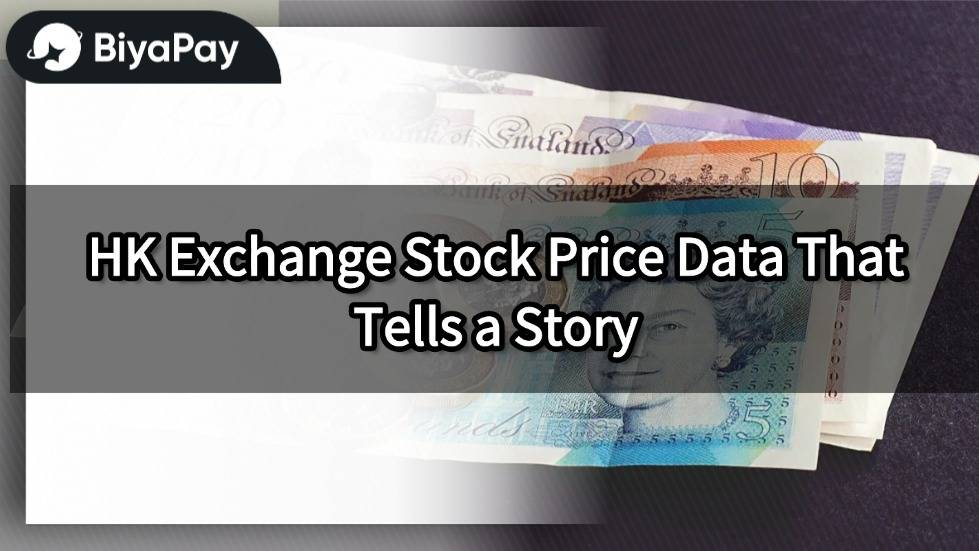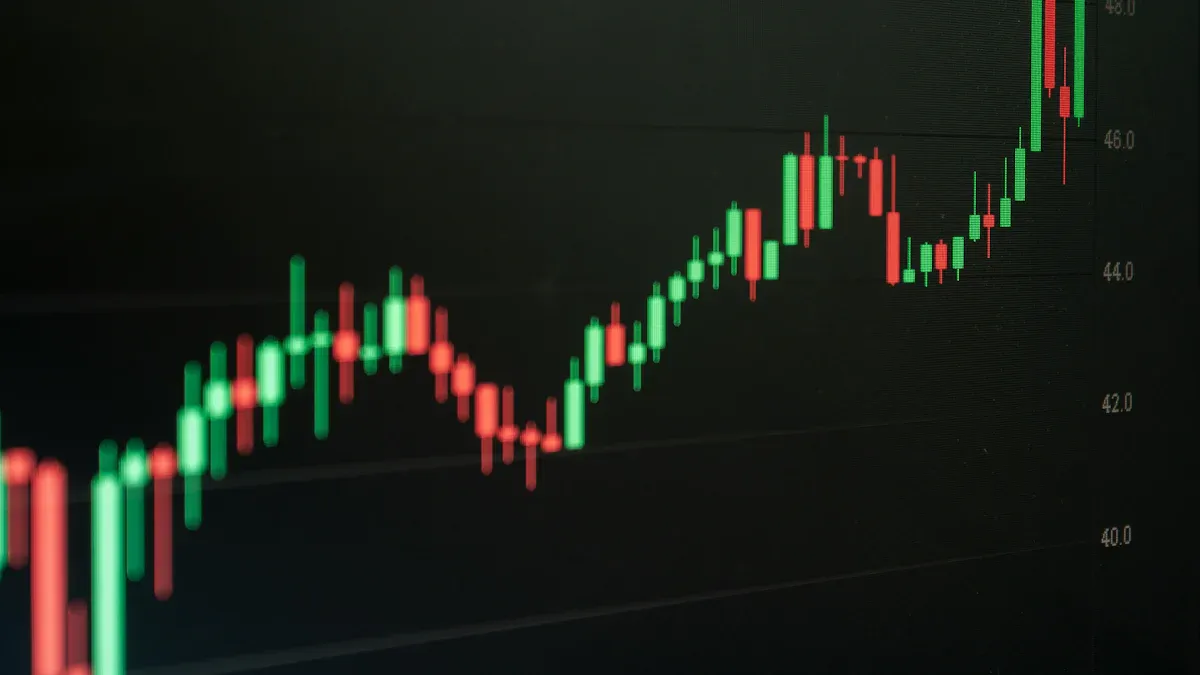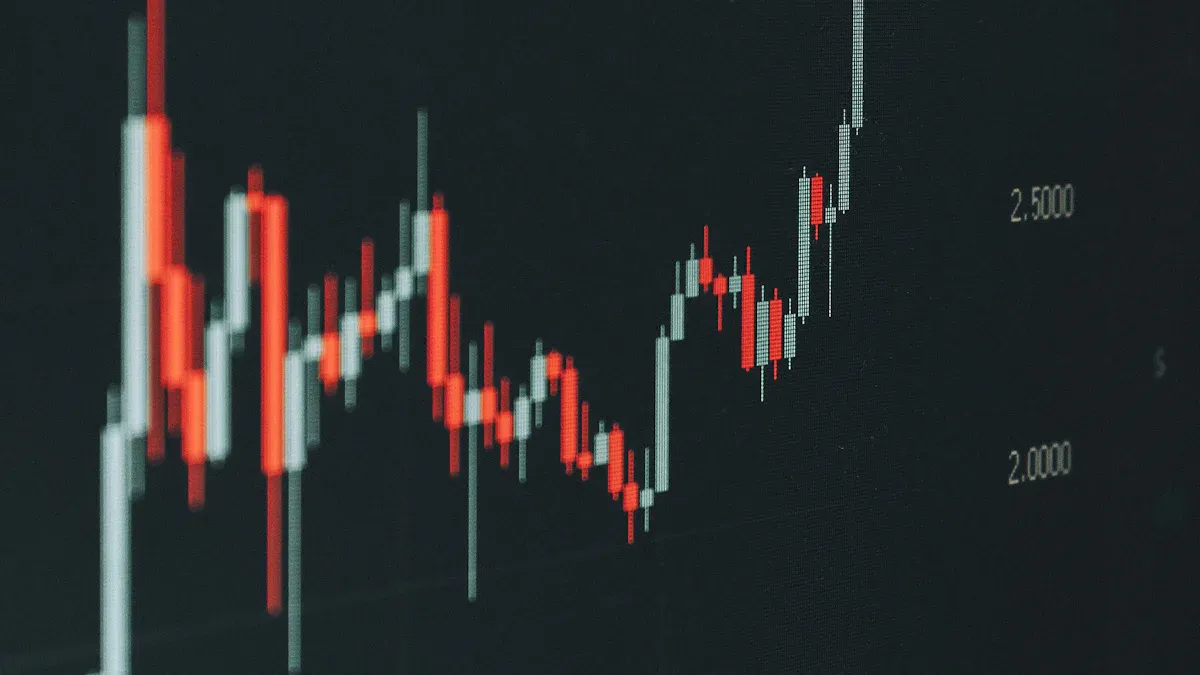- EasyCard
- Trade
- Help
- Announcement
- Academy
- SWIFT Code
- Iban Number
- Referral
- Customer Service
- Blog
- Creator
HK Exchange Stock Price Data That Tells a Story

Image Source: unsplash
You can find hk exchange stock price data from several trusted sources. The official website of hong kong exchanges and clearing limited offers the most direct access. Many investors also use Yahoo Finance or Investing.com for hong kong stock exchange updates. The stock exchange of hong kong and hong kong exchanges and clearing provide historical prices. APIs from hong kong exchanges and clearing limited or the stock exchange of hong kong limited let you download data for analysis. Studying hkex data helps you spot patterns and stories in the market. > Tip: Always compare data from hong kong exchanges and clearing with other sources to ensure accuracy.
Key Takeaways
- Use trusted sources like the official HKEX website and Yahoo Finance to get accurate Hong Kong stock price data.
- Download historical data by following simple steps on websites or financial platforms, and always check the time zone and currency.
- Format your data carefully by labeling columns, removing duplicates, and converting currencies to compare prices easily.
- Analyze key market trends using tools like the Hang Seng Index and look for patterns to understand stock movements better.
- Watch out for common issues like missing data, language differences, and data errors by double-checking with multiple sources.
HKEX Data Sources
When you want to explore hkex data, you need to know where to look. Reliable sources help you get accurate and up-to-date information about the hong kong stock exchange. Here are the main ways you can access hk exchange stock price data:
Official Website
The official website of hong kong exchanges and clearing limited is the first place you should check. This site gives you direct access to the latest prices, historical data, and company announcements. You can find daily trading summaries, charts, and detailed reports. The stock exchange of hong kong and hong kong exchanges and clearing both offer downloadable data for many stocks. The Hang Seng Index, which tracks the largest companies on the hong kong stock exchange, is a key benchmark you will see on the site. You can use this index to compare the performance of different stocks.
Financial Platforms
Many investors use financial platforms to track hkex prices. Yahoo Finance and Investing.com both provide easy-to-read charts and news updates for the hong kong stock exchange. Nasdaq Data Link and EODData.com offer historical data downloads. IFC Markets, etnet, and AASTOCKS.com also give you access to real-time prices and analysis tools. These platforms often let you export data for your own research. The stock exchange of hong kong limited and hong kong exchanges and clearing update their data on these platforms, so you can trust the numbers you see.
APIs
If you want to analyze large amounts of data, APIs are a powerful tool. APIs like EODHD, Polygon, and Marketstack let you fetch historical prices, technical indicators, and even tick-by-tick data from the hong kong stock exchange. Many research studies use APIs to collect years of data for dozens of stocks across different industries. You can get data at different time intervals, such as daily, hourly, or minute-by-minute. Financial Modeling Prep (FMP) is another API that provides bulk data access. Researchers have found that combining historical price data from APIs with news or social media can improve forecasting accuracy. APIs from hong kong exchanges and clearing limited and the stock exchange of hong kong limited are reliable and efficient for handling large datasets.
Tip: Always check if the data source covers the full history you need. Some APIs and platforms offer decades of hong kong stock exchange data, while others may only show recent years.
Download HK Exchange Stock Price
Website Steps
You can start by downloading hkex data directly from the official website. This method gives you access to the most accurate and up-to-date information. Follow these steps to get historical prices:
- Go to the Hong Kong Exchanges and Clearing Limited website.
- Use the search bar to find the stock you want.
- Click on the stock’s profile page.
- Look for the “Historical Data” or “Price History” section.
- Select your date range. You can choose daily, weekly, or monthly data.
- Click the download button. The file usually comes in CSV format.
You can repeat these steps for different stocks. The website also lets you view charts and compare prices over time. If you want to track the hk exchange stock price for several companies, you can download multiple files and combine them later.
Tip: Always check the time zone and currency. The official site uses Hong Kong time and prices in HKD. You may need to convert to USD using the latest exchange rate.
Platform Export
Many investors use financial platforms to export hkex data. These platforms make it easy to get large amounts of information quickly. Here is how you can do it:
- Go to Yahoo Finance or Investing.com.
- Search for the stock or index you want.
- Find the “Historical Data” tab.
- Set your preferred date range.
- Click “Download Data” or “Export.”
- Save the file to your computer.
Some platforms let you choose the file type, such as CSV or Excel. You can also use filters to select only the data you need. Nasdaq Data Link and EODData.com offer similar export features. These platforms update their hkex data regularly, so you get recent prices and volumes.
Note: Some platforms may require you to create a free account before downloading data.
Data Formatting
After you download hkex data, you need to prepare it for analysis. Good formatting helps you spot trends and avoid mistakes. Start by opening your file in Excel or Google Sheets. Check that each column has a clear label, such as Date, Open, High, Low, Close, and Volume. Remove any empty rows or duplicate entries.
You should also make sure all prices use the same currency. If you need to convert HKD to USD, use the latest exchange rate. This step helps you compare hk exchange stock price data with other markets.
When you analyze the data, use simple statistical tools. Calculate the average price, standard deviation, and coefficient of variation. These measures help you understand how much the price changes over time. For example, a low standard deviation means the price stays steady, while a high value shows more risk. You can also use charts to see patterns, such as upward trends or sudden drops.
Statistical methods like regression models and quality control charts help you find deeper insights. These tools let you test if a stock’s price follows a normal distribution or if there are outliers. By using these methods, you can make better decisions and avoid errors in your analysis.
Tip: Always save a copy of your raw data before making changes. This way, you can go back if you need to check your work.
Analyze Hong Kong Stock Exchange Trends

Image Source: unsplash
Key Metrics
When you analyze the hong kong stock exchange, you need to focus on key metrics that show how the market moves. The Hang Seng Index is a main benchmark. It includes 50 large companies from different sectors and covers about 60% of the total market value. This index helps you see the big picture of the hong kong stock exchange. You can also use data from the London Stock Exchange Group. They provide price levels, broker activity, short interest, and over 30 years of historical data. These numbers help you track trends and compare stocks over time.
Tip: Look at both daily and long-term data to understand how the hong kong stock exchange changes.
Spot Patterns
You can find patterns in the hong kong stock exchange by looking at charts and using technical analysis. Some common patterns include Head and Shoulders, Double Top, and Triangle shapes. These patterns can show if prices might go up or down. Many traders use back-testing to check if these patterns worked in the past. They look at profit, loss, and risk. Some people use advanced tools like LSTM networks or Hidden Markov Models. These tools help you find patterns that are hard to see with your eyes. You can also use simple methods like moving averages or ARIMA models to spot trends.
- Pattern reliability matters. Always check if a pattern has worked before.
- Try using both simple and advanced tools to get a full view of the hong kong stock exchange.
Avoid Pitfalls
You may face some challenges when you study trends in the hong kong stock exchange. The market can be very volatile, which makes it hard to predict. Sometimes, only a few stocks have most of the trading activity. This can make trends look stronger or weaker than they really are. Analysts in Hong Kong do not update their reports as often as those in the US, so you might see sudden changes in recommendations. Market sentiment can also affect your analysis. If most people feel positive or negative, it can change prices quickly. Liquidity is another issue. In 2019, the 20 most active stocks made up 43% of all trading. This means many stocks do not trade often, which can distort your results.
- Watch out for high volatility and sudden changes.
- Do not rely only on analyst recommendations or popular stocks.
- Always check for liquidity before making decisions.
Real-World HKEX Stories

Image Source: unsplash
Company Case Study
You can learn a lot from real companies listed on the hong kong stock exchange. Let’s look at a well-known example. Tencent Holdings, one of the largest technology firms in China, trades on the hong kong stock exchange. If you study Tencent’s price data, you see how news, earnings, and global events affect its value. In 2020, Tencent’s stock price rose sharply after strong earnings reports and new product launches. You notice that during global market downturns, Tencent’s price also dropped, showing how the hong kong stock exchange connects with world markets. By tracking Tencent’s daily prices, you can spot patterns like sudden jumps or slow climbs. This helps you understand how investors react to news and trends.
Tip: Pick a company you know and follow its price on the hong kong stock exchange for a few months. You will see how real events shape the numbers.
Market Trends
You can use hkex data to spot big changes in the hong kong stock exchange. Market trends often show up in numbers before you see them in the news. Experts use special metrics to measure these trends. Here is a table that shows some important ways to track market changes:
| Metric | What It Shows | Why It Matters During Crises |
|---|---|---|
| Average Correlations | How stocks move together | Jumps up during crashes, drops after |
| Number of Correlated Stock Pairs | How many stocks move in the same way | Peaks in crises, shows stress in the market |
| Edge Density | How tightly stocks are linked | Rises in crashes, shows tighter market connections |
| Clustering Coefficients | How groups of stocks behave together | Tracks price swings, changes a lot in tough times |
These metrics help you see when the hong kong stock exchange faces stress, like during the 2008 financial crisis. You notice that stocks move together more closely during tough times. By watching these numbers, you can spot bull runs, bear markets, and crisis periods in hkex history.
Common Issues
Data Gaps
You may notice missing data when you download stock prices from the Hong Kong stock exchange. Sometimes, you find gaps in the records. These gaps can happen for several reasons:
- Public holidays in Hong Kong when the market closes.
- Technical problems on the data provider’s website.
- Delays in updating the latest prices.
If you see missing days or prices, check the official HKEX calendar. This calendar shows all trading and non-trading days. You can also compare your data with another source, such as Yahoo Finance or Investing.com. This helps you spot and fix missing values. If you use APIs, set up alerts for incomplete downloads.
Note: Always keep a log of the dates you collect data. This helps you track any gaps and fill them later.
Language & Currency
You may find that some data sources use Chinese or English. The official HKEX website offers both languages, but some third-party sites may only use one. Make sure you select the language you understand best. If you use Google Chrome, you can use the built-in translation tool.
Stock prices on the Hong Kong stock exchange appear in Hong Kong dollars (HKD). If you want to compare these prices with stocks from the United States or Europe, you need to convert HKD to USD. Use the latest exchange rate. For example, if 1 HKD equals 0.13 USD, multiply the price by 0.13 to get the value in USD.
| Currency | Example Price | Exchange Rate | USD Value |
|---|---|---|---|
| HKD | 100 | 0.13 | 13 |
Tip: Always write down the exchange rate you use. Rates can change daily.
Data Accuracy
You need to check the accuracy of your data before you start your analysis. Errors can happen if the data provider updates slowly or if there are mistakes in the download. Always compare your data with the official HKEX website. If you see big differences, double-check the numbers.
You can use simple checks to spot errors:
- Look for prices that jump or drop suddenly without news.
- Check if the trading volume matches the price movement.
- Use charts to see if the data looks smooth or has strange spikes.
If you find errors, try downloading the data again or use another source. Reliable data helps you make better decisions and avoid costly mistakes.
You now know how to find, download, and analyze Hong Kong stock exchange price data. Start with trusted sources like the official HKEX website or Yahoo Finance. Download the data, check for accuracy, and format it for your needs. Use simple tools to spot trends and patterns.
- Try following a company or index over time.
- Compare data from different sources.
- Explore new analysis methods as you learn.
For deeper study, look into financial modeling books or online courses. You can also try using APIs for larger projects.
FAQ
Where can you find the most accurate HKEX stock price data?
You can find the most accurate data on the official Hong Kong Exchanges and Clearing Limited website. This site updates prices in real time. You can also check Yahoo Finance or Investing.com for reliable information.
How do you convert HKD prices to USD?
You multiply the HKD price by the current exchange rate. For example, if 1 HKD equals 0.13 USD, a stock price of 100 HKD becomes 13 USD. Always check the latest exchange rate before converting.
Tip: Write down the exchange rate you use for your records.
Can you download historical data for free?
Yes, you can download historical data for free from the official HKEX website and Yahoo Finance. Some platforms may ask you to create a free account before downloading.
What should you do if you find missing data?
You should compare your data with another trusted source. Check the HKEX trading calendar for holidays. If you still see gaps, try downloading the data again or use a different platform.
Turn your HKEX data insights into profitable investments with BiyaPay! Our multi-asset wallet enables fee-free USDT conversions to multiple fiat currencies like USD or HKD, with low 0.5% fees for transfers to overseas bank accounts, allowing you to trade Hong Kong stocks directly. With a 1-minute signup and secure, real-time transactions, BiyaPay simplifies access without complex overseas account setups. Act on trends like the Hang Seng Index with confidence, ensuring efficiency and transparency.
Take the next step—visit BiyaPay to register and elevate your Hong Kong stock investments!
*This article is provided for general information purposes and does not constitute legal, tax or other professional advice from BiyaPay or its subsidiaries and its affiliates, and it is not intended as a substitute for obtaining advice from a financial advisor or any other professional.
We make no representations, warranties or warranties, express or implied, as to the accuracy, completeness or timeliness of the contents of this publication.




Contact Us
Company and Team
BiyaPay Products
Customer Services
is a broker-dealer registered with the U.S. Securities and Exchange Commission (SEC) (No.: 802-127417), member of the Financial Industry Regulatory Authority (FINRA) (CRD: 325027), member of the Securities Investor Protection Corporation (SIPC), and regulated by FINRA and SEC.
registered with the US Financial Crimes Enforcement Network (FinCEN), as a Money Services Business (MSB), registration number: 31000218637349, and regulated by FinCEN.
registered as Financial Service Provider (FSP number: FSP1007221) in New Zealand, and is a member of the Financial Dispute Resolution Scheme, a New Zealand independent dispute resolution service provider.



















